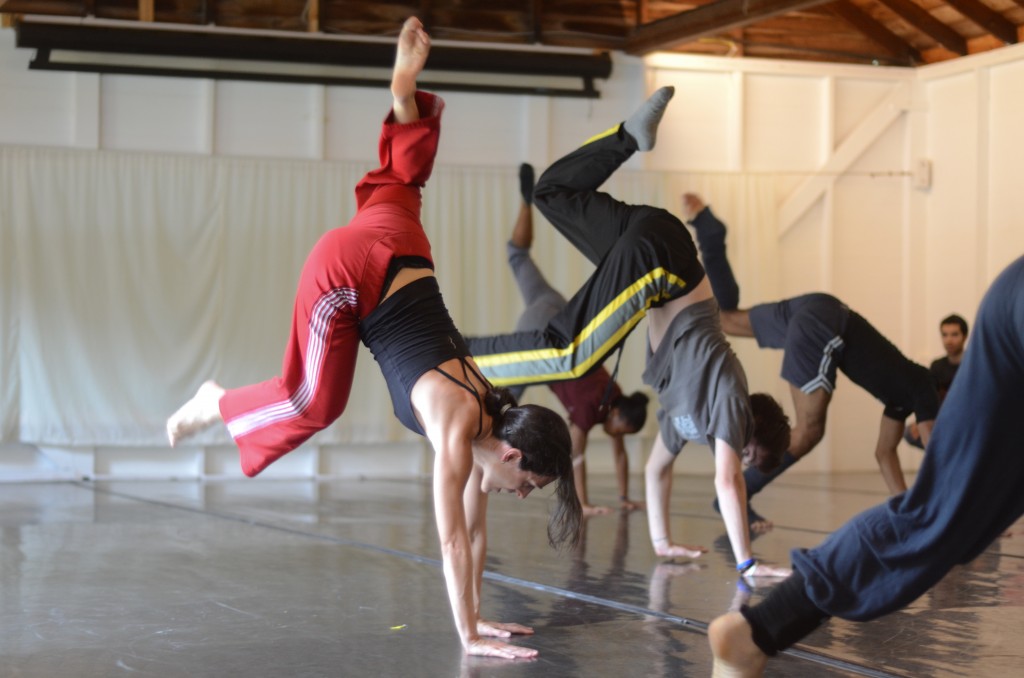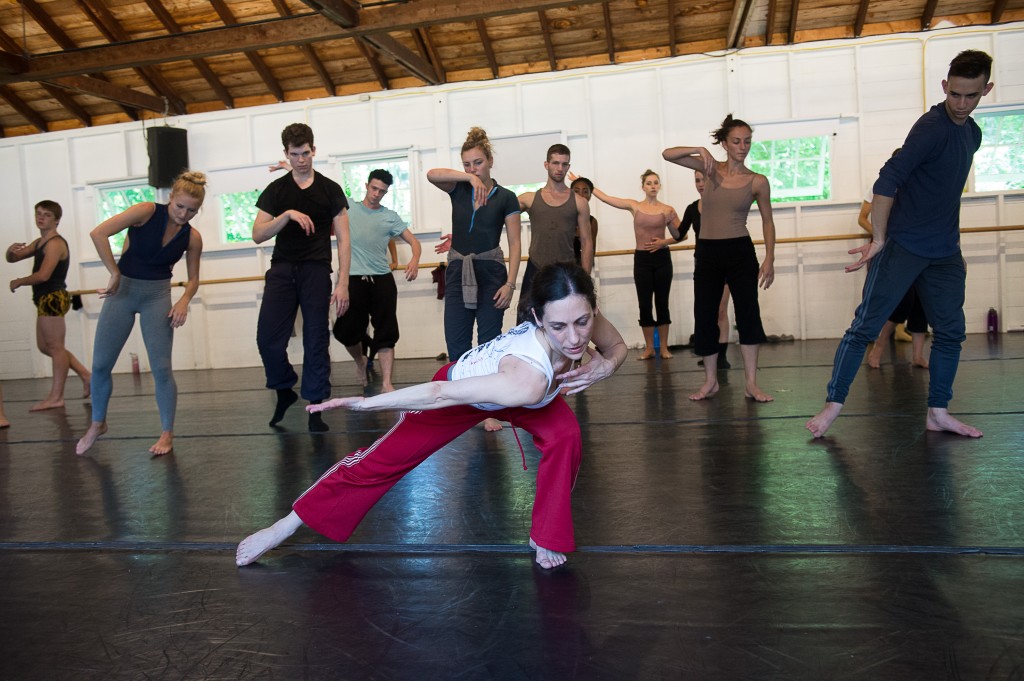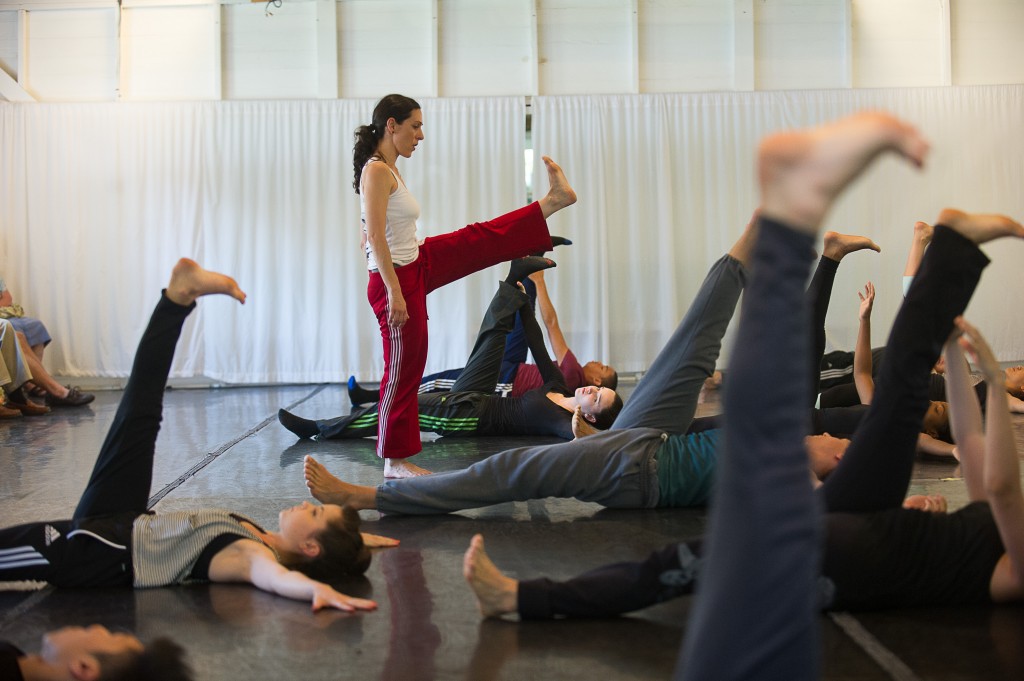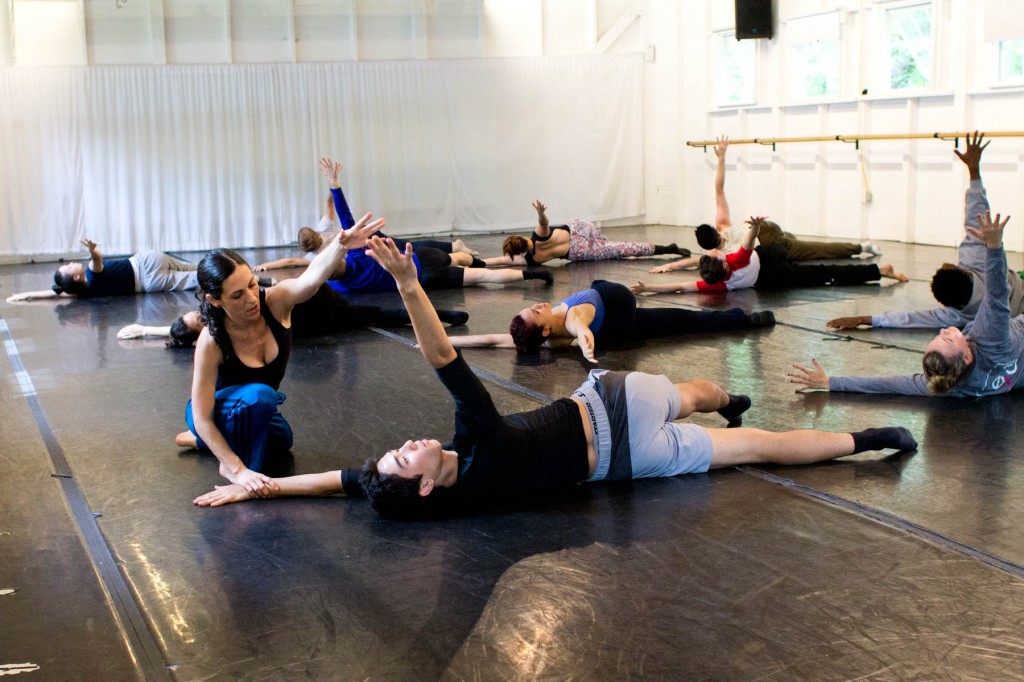
Our guest author for this Dance Wellness posting is introducing a topic I have been wanting to bring to our readers–integrating somatic work into dance. Nancy Wozny has long been associated with somatics and dance, and is currently Editor-in-Chief of Arts + Culture Texas, in Houston. She is a Feldenkrais teacher and has taught at Baylor College of Medicine, Texas Women’s University, the Jung Center, and other institutions, and has been a guest lecturer at Rice University since 2005.
Somatics (the term is derived from the Greek word for the living body ‘ Soma”) many years ago was called “The Body Therapies”, and has long been a topic close to my heart. In the 1980’s / early 1990’s, I was Director of the Workshops for Professionals at The American Dance Festival, which included The Body Therapy Workshop–and in that capacity, I had the privilege to learn about and experience many forms of somatic work, and could see their benefits for dancers.
Nancy’s article will be the first in a series of articles I hope to have for you, our readers. This one is meant as a general introduction to the subject, and down the road we will have separate articles on some of the major somatic systems that are being used in dance. We have already talked about some of them – Pilates, for example, and Franklin Method, could be considered to be in this category.
I’m very pleased that Nancy has agreed to write this initial article on a very important topic —Enjoy !
Jan Dunn, MS, Dance Wellness Editor
______________________________________
by Nancy Wozny
“How do you allow the movement to be reversible at any moment?” asks Ami Shulman, while teaching in the contemporary program at the school of Jacob’s Pillow. Shulman, formerly of Compagnie Marie Chouinard and now a Feldenkrais teacher, is part of a new generation of movement educators shaping the dance field one plie at a time.
Somatics has come a long way since I was once introduced by accident as an expert in “somnambulism,” which technically is a sleeping disorder. We do, in fact, become a little sleepy when doing a somatic practice, but that’s not the point.
Much of what makes up the field of somatics was in motion way before the term was coined in 1976 by philosopher Thomas Hanna. Somatics derives from the Greek word for the living body, “soma,” and is the study of the body experienced from within. More simply put, it’s the skill of being able to sense one’s state of being. You would think we wouldn’t need help with that, but due to the habitual nature of our modern lives, we do.
Today, if you mention you attended a Feldenkrais Method or Alexander Technique session, many of your peers will have some idea of what you mean. The years of “Feldenwhat?” and “Alexander who?” are fading. The Alexander Technique even got a mention in Lena Dunham’s popular HBO hit show GIRLS. There’s also a much greater chance that you might run into somatic principles and concepts in your daily life.

Listening to Shulman pepper in instructions with words like “soften,” “feel,” “explore” and “sense,” reminds me of just how fluid the boundary can be between somatics and a dance class. There are a multitude of ways the work surfaces in a movement class. If your dance or yoga teacher starts with a body scan on the floor, that’s somatics. If you have worked with a foam roller with your physical therapist, yep, somatics. (Moshe Feldenkrais was first to use those handy cylinders. Back in the day, they were made from wood.) If you have tried any wobbly balance challenging gadget, yes, that too has its origins in the somatics goal of enlisting a non-habitual environment to elicit new movement. If anyone has asked you to stop and pay attention to what you are actually doing in that moment, boom, somatics.
The idea that we can better pay attention to our actions to control our movement can be traced back to the late 19th-century European Gymnastik movement, which used breath, movement, and touch to direct awareness. François Delsarte, Emile Jaques-Dalcroze and Bess Mensendieck encouraged a kind of inside-out expression that questioned the traditional nature of movement training. They seemed to be saying “the body is the person,” thus joining mind and body in a celebration of the human form.
The American contribution to somatics also deserves mention. Mabel Ellsworth Todd’s classic text, The Thinking Body, introduced dancers to the role of the mind in dance training back in 1937. Her student, Lulu Sweigard (who later taught at Juilliard), developed a process of activating the imagination to affect movement called “ideokinesis.” (from the Greek words for “idea” and “movement”) Irene Dowd, who won the American Dance Festival’s 2014 Balasaraswati/Joy Ann Dewey Beinecke Endowed Chair for Distinguished Teaching award, carried the work even further. Eric Franklin, with the Franklin Method, continues to explore and develop new ways to incorporate imagery and neuroplasticity concepts into dance training.
The American Dance Festival, in Durham, NC, under the leadership of Dean Martha Myers, introduced somatic work to thousands of dancers in the 1980’s and ‘90’s, with The Body Therapy Workshops and by having specific classes and faculty as part of the regular Festival schedule. Myers, while not a somatic practitioner herself, early on recognized the value of this work for dancers, and through her, ADF became one of the seminal places where somatics integrated into dance training. Her 6-part Dance Magazine series “The Body Therapies” (1983) is considered one of the best early sources for learning about the field.
Soon, it seemed people from all over the world, from a variety of disciplines, were exploring the same territory from different entry points. Because dance is a body-centered art from, it has always been ahead of the body/mind game.
In fact, so many of the American somatic pioneers harked from the dance world. Bonnie Bainbridge Cohen (Body-Mind Centering) was first to consider how our developmental structures are mirrored in our movement. The late Emily Conrad (Continuum) considered the primacy of the fluid system. Joan Skinner (Skinner Releasing Technique), Elaine Summers (Kinetic Awareness), Susan Klein (Klein Technique), and Judith Aston (Aston-Patterning) each added their own approaches as well.

And then we need to consider all the somatic smoothies going in dance, yoga, Pilates and fitness classes. The material is out there and people are using it, whether they know where its origins are from or not.
So what defines an activity as somatic? Here are some basic guidelines. Know that there are differences between each somatic discipline that may stress one of these principles more than another. While the modalities differ, the goal of living a more complete and embodied life remains central to the somatic domain.
Starting in a neutral place:
Somatics is a subtle process, if we don’t know where we are in the first place, it might be hard to tell that anything is different at the end. We need a baseline to know that change occurred. Most somatic classes begin with some kind of inventory of how a person is operating. It may be as simple as lying on the ground and sensing which parts are heavier.
Slower than slow:
If you have ever listened to someone playing a familiar song on the piano so slowly that you forget what song it is, you will know exactly why we move so slowly in a somatic class. When we move slowly, it gives us the time to pay attention, and our habits are less likely to commandeer the train of our body and take over. We get a fresh start and a better chance for improvement. Keep in mind, things aren’t always slow; that would be too habitual.
Using images:
When Shulman asks her students to use their feet like a tongue, suddenly the quality in the room shifts as they consider the contact of their body against the floor. Many somatic practitioners have used visual images to evoke certain ideas, direction or quality of movement. The mind/body card has been since backed up with mirror neuron theory concerning the power of thinking yourself through a movement.
Reflection:
Whether its Emily Conrad’s open attention, or Alexander’s inhibition, or Feldenkrais’ many rests, there is always the pause that matters. Somewhere in the process, you will stop what you are doing. Somatics enlist a discontinuous process, and the pauses are built into the lessons. In Feldenkrais, the pause is when the work does its work.
Habit:
Somatics practitioners talk a lot about habit. The first thing to know is that we need habits. Life would be a huge bore and a chore without them. We would spend all day trying to figure out how to tie our shoes. Habit is not the bad guy. But not having enough habits, or using the wrong habit to accomplish a certain action, can lead us into trouble.
Non-habitual movement:
If you find yourself doing the same thing week after week, it’s not somatics. We like to change it up on planet soma, so there is very little repetition. Most often you are doing movements that you have never done before, which will feel awkward and sometimes, even annoying. Dancers don’t like to be beginners, but they should give it a try more often. When you do a movement that is new to you, it’s hard to bring old habits to the floor, because you don’t have any.
Exploration rather than accomplishment:
This is a tough one for dancers, who are used to getting somewhere, and generally speaking, the faster the better. The “there” of somatics is not one place, but many places. Lessons are designed for you to explore through. You navigate a constrained playground set up by the lesson or practitioner.
Feel rather than see:
When I was a young dancer, moving away from the mirror meant I basically disappeared. I had no idea where I was in space without my BFF, the mirror. I was constantly getting lost on stage because of this over reliance on my reflection. In a somatic experience, the mirror should and will be covered. You will be sensing yourself from the inside. This is a skill, and a rather handy one at that. As mirrors do not follow us around in our lives, I suggest you learn it well. (Editors’ note: Do you remember from the Sally Radell articles on mirrors? – I gave you Master Limon Teacher Betty Jones’ favorite quote: “mirrors put you outside of your body, not in it”!)

How does somatics fit in with a dancer’s overall training regime?
In my day, some dancers went off the deep end of the somatic pool and forgot that they needed daily training to keep up their technique. This is the contradiction we need to embrace in any kind of elite training. It takes hard work to make a dancer, with tons of repetition and time in the classroom. Somatics doesn’t replace training, it augments it, preventing the strict training regimes necessary in dance from becoming injurious. It helps spread the neurological load, so we move with more of ourselves in terms of effort. We don’t build strength in a somatics activity, we gain easier access to our strength. Just like a diet, we need and crave variety, and a chance to reboot our system so that we are operating in the most optimal way. That’s what somatics offers.
Do I have to go to a dedicated somatics class?
These days, a somatic experience can be slipped into just about any kind of movement class. There are ballet teachers who have been known to bring in a little somatics between tendus and grande battements. As I said earlier, the material is out there and being used in all kinds of innovative ways. You would be hard pressed to find a physical therapist not using some somatic principles in their work. A dedicated class is terrific for injury prevention and deep learning, but know there are many ways to access this wealth of knowledge.
What will seem downright weird to newbies?
Honestly, just about everything. You will think you are wasting your time on the ground sensing yourself when you could be stretching. Your teacher may not be a dancer or even look remotely like a dancer. I remember thinking during one of my early Feldenkrais classes that the movement was ugly. You will wonder how these simple movements will help you. You might doubt everything. All of this or some of this will probably happen. Carry on anyway. It will be worth it in the long run.
So why add this to your already jammed back training regime?
A few reasons: you will have a longer career, you will gain skills that will stay with you way beyond your dance career, and finally, you will simply be more graceful to watch, whether you are fetching water or doing a 32 fouettes.

Nancy Wozny picked up the somatics cause when she was 22 and never put it down. She has taught Feldenkrais classes to a broad range of individuals and has taught at Baylor College of Medicine, Texas Women’s University, Rice University, the Jung Center and other institutions. Her stories on dance and somatics can be found in Dance Magazine, Dance Teacher and Pointe. Currently, she is editor in chief of Arts + Culture Texas, based in Houston, TX.





